#Cat6a Plenum Cable
Explore tagged Tumblr posts
Text
Cat5e vs. Cat6 vs. Cat6a – Which is Best for NYC Users?
In a city as fast-moving and digitally connected as New York, your internet performance can make or break your productivity. Whether you're managing a home office in Brooklyn, running a startup in Manhattan, or streaming movies in Queens, the type of Ethernet cable you choose has a big impact. If you're stuck deciding between Cat5e, Cat6, and Cat6a, this guide is for you.
We'll break down what each cable type offers, compare them in practical NYC scenarios, and help you choose the one that matches your environment and speed requirements.
Understanding Ethernet Cable Categories
Ethernet cables are categorized based on speed, frequency, and shielding. The three most common types for residential and commercial use today are:
Cat5e (Category 5 Enhanced)
Cat5e is an upgraded version of the original Cat5 cable, designed to reduce crosstalk and support faster data speeds.
Key Features:
Speed: Supports up to 1 Gbps
Bandwidth: 100 MHz
Distance: Up to 100 meters (328 feet)
Usage: Home networking, basic office setups
Cat5e remains popular due to its affordability and ease of installation. It's ideal for light internet users in NYC apartments or smaller residential setups.
Cat6 (Category 6)
Cat6 cables offer better shielding and tighter twists compared to Cat5e, which helps reduce interference and allows for higher data transmission speeds.
Key Features:
Speed: Up to 10 Gbps (over 55 meters)
Bandwidth: 250 MHz
Distance: Up to 100 meters for 1 Gbps
Usage: Small to medium businesses, remote workers, gamers
Cat6 Plenum is perfect for NYC users who stream 4K content, video conference daily, or operate in shared office spaces.
Cat6a (Augmented Category 6)
Cat6a takes everything great about Cat6 and enhances it. With added shielding and increased bandwidth, it’s ideal for high-demand environments like data centers or large office networks.
Key Features:
Speed: 10 Gbps over full 100 meters
Bandwidth: 500 MHz
Shielding: Often fully shielded (F/UTP or S/FTP)
Usage: High-performance offices, enterprise-grade networking
In NYC, Cat6a is best for businesses with advanced networking requirements, smart office infrastructure, and PoE-enabled devices.
Which Cable is Right for NYC Users?
Choosing the right Ethernet cable in New York depends on several factors: internet usage, physical space, interference levels, and future scalability.
Home Users in NYC
If you're in a studio apartment or a small family home and just want reliable internet for browsing, video calls, and streaming, Cat5e is more than enough. It's affordable, widely available, and easy to install.
However, if you live in a building with many wireless devices and thick walls (common in older NYC apartments), you might want to consider Cat6 to reduce interference.
Remote Workers & Freelancers
For freelancers working from home or individuals hosting frequent Zoom calls, Cat6 is a better choice. It offers more speed and less latency, which is especially important in NYC where digital communications are essential.
Cat6 cables also support basic Power over Ethernet (PoE) devices like VoIP phones or security cameras, useful for tech-savvy users.
Small Businesses & Shared Offices
Coworking spaces, startups, and small businesses in NYC need strong and stable internet connections to operate efficiently. Cat6 provides the balance between performance and cost-effectiveness. It's scalable enough to support additional workstations as teams grow.
If your office uses cloud-based applications, video conferencing, and large file transfers regularly, Cat6a might be the better long-term investment.
Corporate Offices and Data-Heavy Environments
In corporate offices or buildings that house servers, media editing suites, or multiple smart devices, Cat6a is the top-tier choice. Its shielding ensures optimal performance, even in electrically noisy environments like server rooms or HVAC-packed spaces.
Shielding Matters in NYC
New York buildings are packed with electronic devices, HVAC systems, and heavy wiring. This creates a high level of electromagnetic interference (EMI). Shielded cables like Cat6 STP and Cat6a offer protection against this.
Benefits of Shielded Cables in NYC:
Reduced EMI: Clean signals for smoother internet
Better for Smart Devices: Ideal for IoT and PoE systems
Improved Security: Less chance of signal leakage
If you're setting up a business in a busy commercial area like Midtown or Downtown Manhattan, shielded Cat6a cables can offer the consistency and stability your network demands.
Future-Proofing Your Network
Internet speeds and technologies are always evolving. While Cat5e may work today, upgrading to Cat6 or Cat6a means you won’t have to replace your cabling in a few years when bandwidth demands increase.
For example:
Smart homes are becoming more common
Streaming services are pushing into 8K
Remote work tools require high bandwidth
Investing in better cabling now saves you the hassle and cost of reinstallation later.
Where to Buy Ethernet Cables in NYC
Looking for high-quality Ethernet cables in New York? At NewYork Cables, we offer:
Bulk Cat5e, Cat6, and Cat6a cables
Shielded and plenum-rated options
Same-day shipping in NYC
Expert advice for choosing the right cable
Whether you're setting up a home office in Harlem or wiring an enterprise office in Wall Street, we have the perfect solution for your networking needs.
Final Thoughts
So, Cat5e vs. Cat6 vs. Cat6a – which is best for NYC users?
Choose Cat5e for affordable, basic setups.
Go with Cat6 for speed, reliability, and flexibility.
Opt for Cat6a for maximum performance and future readiness.
Every network is different, and choosing the right cable depends on your current needs and future plans. Still unsure? Contact NewYork Cables and let our experts guide you.
Your network deserves the best especially in a city that never slows down.
0 notes
Text
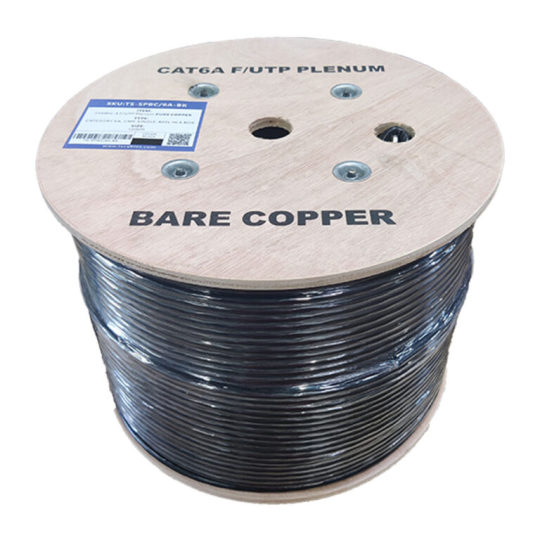
Cat6A Plenum Shielded F/UTP Cable 1000ft, Overall Foil Shield
The 1000ft Cat6A Plenum Shielded F/UTP Cable has a full foil shield for performance and protection. Plenum-designed cables ensure commercial data transfer dependability. EMF interference is decreased via shielding. It is reliable for 1000-foot professional high-performance data networks and supports many networking applications.
Read more: https://bncables.com/product/cat6a-plenum-f-utp-cable-1000ft-overall-foil-shield/
Cat6aPlenum #EnthernetCables
0 notes
Text

CAT6A Plenum Pure Copper 750Mhz 1000ft UTP Bulk Ethernet Cable
Cat6 Ethernet cables is 8 conductors (4-Pairs) of solid bare copper with a high-density polyethylene (HDPE) insulation and a CMP rated Jacket (fire-resistant). Our Category 6A Un-Shielded CMP Rated Plenum Cable is designed for residential/commercial LAN applications and is resistant to fire and heat, making it the best solution for installation runs that require plenum rated.
Read More: https://atscables.com/cat6a-bulk-cables/cat6a-plenum-pure-copper-750mhz-1000ft-utp-bulk-ethernet-cable/
Cat6Cables #Cat6EthernetCables #Cat6Plenum #PureCables
0 notes
Text
Understanding the Benefits of Cat6a Plenum Technology
Cat6a plenum technology has been around for quite some time now. It emerged in 2009 and since then it has been widely used worldwide in the networking industry. This cable is perfectly fit for all the applications requiring high bandwidth capacity, higher data transfer rates, fewer cross-talks, and high data integrity. The ethernet cable that has been developed using this technology caters to all the industry standards. It is IEEE 802.3ab, IEEE 802.5, TIA/EIA, and RoHS verified.

Cat6a plenum is a category 6 cable. This is an improved version of its previous cat6 cable. The “a” in cat6a is stands for augmented. Some manufacturers are selling this cable by the name of cat6e but it is not TIA/EIA verified because it is not an enhanced version of cat6 cable. Cat6 Plenum contains exceptional properties that make it suitable for Ethernet, Fast Ethernet, Gigabit Ethernet, and 10 Gigabit Ethernet. The data transfer rate of this cable is 750 MHZ. You can use this cable broadband, video and voice streaming, and ATM PoE. This cable can support up to 10 Gigabit Ethernet at 100 meters. Moreover, it can support up to 10Gbps data transfer speed.
1 note
·
View note
Text
Plenum Cable Types & Specifications: Cat5e, Cat6, and Cat6a
Plenum cables are cables with CMP-rated jackets that are suitable for installation in the plenum spaces of buildings. All Ethernet cables, including Cat6 cable, Cat6a cable, and Cat5e cable, have CMP-rated jackets.
Let's start with a definition of plenum spaces before we go into the details:
Plenum Spaces
Plenum spaces are areas of a building where air circulation for air conditioning and heating systems is facilitated. Plenum spaces accomplish this by allowing conditioned/heated or return air to flow at a higher atmospheric pressure.
Plenum Cables
Plenum cables, as previously indicated, are those having CMP-rated jackets. Communication Multipurpose Cable, Plenum is the abbreviation for Communication Multipurpose Cable, Plenum. The jacket material received the highest CMP grade in the industry. CMP-marked cables are composed of the highest-quality PVC (polyvinyl chloride) material. Due to the harsh temperature conditions in plenum spaces, ethernet cables placed here should be of the highest quality jacket material.
The plenum wires are fire-resistant and prevent the spread of fire. Plenum cables or CMP-rated cables release no smoke or harmful gases when exposed to a fire. Plenum cables are also UV resistant, making them an excellent choice for both residential and commercial installations. The plenum cables' thick coating also provides excellent protection against alien crosstalk, near-end crosstalk, and EMI (electromagnetic interference).
Plenum cables are classified as follows:
Plenum Cat5e Cable
Plenum Cat6 Cable
Plenum Cat6a Cable
Cat5e Plenum Cable Specifications
A CMP-rated jacket is included with a Cat5e plenum cable. It has a 1Gbps (Gigabits per second) data transfer rate over a distance of 50 meters (164 feet) and 100Mbps over a distance of 100 meters (328 feet). Although the TIA/EIA standard for bandwidth capabilities is 100MHz, several manufacturers make Cat5e cables with bandwidth capabilities up to 350MHz.
Pure copper conductors and CCA (copper-clad aluminum) conductors are also available in Cat5e plenum cable. In every way, cables with pure copper conductors outperform those with CCA conductors in terms of performance. This cable is also available in UTP and STP versions. Unshielded twisted pair is referred to as UTP, whereas shielded twisted pair is referred to as STP. In locations where high EMI is prevalent, STP cables are preferable, whereas UTP cables are used in environments where EMI is not an issue. STP cables are significantly more costly than UTP cables.
The wire gauge of Cat5 cable ranges from 22AWG to 26AWG (depending on the manufacturer)
Cat6 Plenum Cable Specifications
Cat6 Plenum cable is defined as a Cat6 cable with CMP-rated jackets. The properties of the jacket are the same as those covered in the previous sections.
Cat6 plenum cable enables 10Gbps data transfer rates over a distance of 50 meters (164 feet) and 1Gbps over 100 meters (328 feet) when it comes to data speed. Cat6 cables have a bandwidth of 550MHz, which is sufficient for most applications. There are pure copper conductors as well as copper-clad aluminum conductors in these cables. Cat6 plenum cables marked with UTP are unshielded twisted pairs, whereas those marked with STP are shielded twisted pairs.
The wire gauge of the Cat6 cable ranges from 22AWG to 26AWG (depending on the manufacturer).
Cat6a Plenum Cable Specifications
A Cat6 Plenum cable is a Cat6a cable with a CMP-rated covering. The jacket features the same thick covering, fire resistance, and UV resistance as the previous two cables.
The Cat6a Plenum cable delivers data transmission rates of 10Gbps over a distance of 100 meters in terms of data throughput. The wire's 750MHz bandwidth allows it to retain signal strength over greater distances. The wire gauge of the Cat6a cable ranges from 22AWG to 26AWG (depending on the manufacturer). High-speed applications such as 100BASE-XT Fast Ethernet, 10BASE-T, 1000BASE-T (IEEE802.3), 750MHz Broadband Video, and other secure networking applications commonly use the cable.
0 notes
Text
What has Changed From CAT5e to CAT6a Plenum Cables?
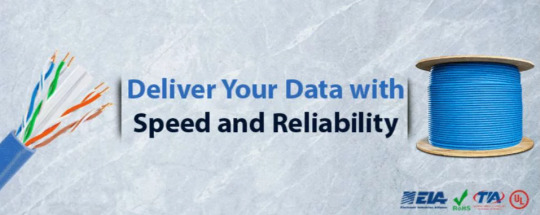
A lot has changed since CAT5e Plenum Cable’s introduction back in 1998, which was one of the major introductions in Category series, paving the way for the futuristic networking cable: a faster and a better performance CAT6a Plenum Cable. http://bit.do/Cat5e-Cat6a-cables
#cat5e#cat6a#cable#cables#wire#plenum#CMP#Ethernet#Network#Networking#Cat6a plenum#cat5e plenum#plenum cable#networking cable#Ethernet cable#cat6a cable#cat5e cable#cat6a plenum cable#cat5e plenum cable
0 notes
Text
The specialty of Cat6a Networking Cable
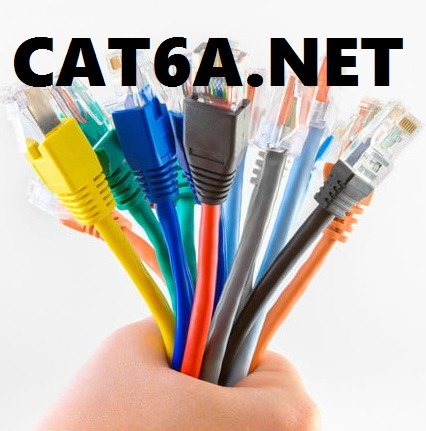
CAT6A has the bandwidth of up to 500MHz and transfer data of 10G up to 100 meters. This cable is very much effective and efficient. http://bit.do/eQKcS
#cat6a#cable#cables#cat6a cable#cat6a plenum#cat6a plenum cable#cat6a riser#cat6a riser cable#cat6a plenum cmp
0 notes
Text
Fresh Stock Available Now
Spend More Save More - YesCables
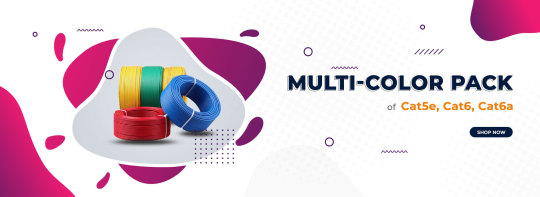
2 notes
·
View notes
Link
CAT6 and CAT6a are the two types of Ethernet networking cables which are superior from the prior categories in the sense of the specifications but the price do defer in the same spectrum; but are they made of pure copper?
#Wire#Wires#Cable#Cables#Ethernet#Riser#Plenum#Cat6#Cat6a#PureCopper#Copper#Cat6Plenum#Cat6aPlenum#Cat6Riser#Cat6Cables#Cat6aCables#PlenumCable#ULCable#NetworkCable
2 notes
·
View notes
Text
What CCA wires can do to your networks?
CCA or Copper Clad Aluminum wires, as the name indicates, are composed of two metals namely Copper and Aluminum.
The outer Copper coating serves the purposes of insulation whereas the inner Aluminum wire conducts an electrical impulse.

The UTP CCA cables are generally less expensive than pure Copper cables. Additionally, they are lighter too which makes them a good choice because they are easy to handle.
CCA cables are cost-effective, sustainable, moderate and durable in most circumstances but do have certain implications when used in networks.
Given below are some of the salient features of CCA cables, which make them a strong contender for most optimum use under various conditions within networks.
Cost-effectiveness:
They are less expensive in comparison to many other sets of cables composed of pure Copper. The manufacturers have to invest less and gain more profit. The user purchases the cable at a relatively cheap price.
Lighter in weight:
CCA wire is a gentle mix of Copper and Aluminum. Pure copper cables are bulky in structure and are quite heavy whereas CCA wire is lighter in weight which is one very important feature which makes them a preferable choice.
More reliable in comparison to pure aluminum cables:
CCA wires are more reliable, conductive and durable in comparison to pure Aluminum cables and that because Copper is one of the key component used in the manufacturing of CCA cables.
Copper adds flavor and dignity thus CCA wires look more effective. Data delivery mechanism looks a different ball game altogether because of Copper as one of the constituents.
Once applied to networks, CCA wires do have implications too which can lead to annoyance, frustrations and mental uneasiness, some of the negative impacts of CCA wires are:
Poor flexibility:
Flexibility is one of the underlining characteristics of the patch, cord and Ethernet cables. CCA wire is flexible but to an extent only. Exerting too much pressure with defaming ruin the structure of the wire and it won’t be in good shape for further use.
CCA cables cannot be drawn out or stretched beyond certain limits. The cables are thus vulnerable to damage, dent, and destruction.
Oxidation:
Each metal has the ability to react with atmospheric oxygen to form an oxide of Iron, which results in gradual rusting of metal. More the external layer is exposed to oxygen, the process of rusting speeds up and decays the structure. Aluminum is a highly reactive member of metals and would easily react with oxygen under ordinary conditions that are at room temperature. So there is every chance of poor connectivity because even being located beneath the surface of copper, the terminal ends have to be exposed for making connections with the nearby wires to construct a network and this is where the shoe pinches.
Authenticity:
CCA wire can only exist to form a UTP (Untwisted Pair network). CCA wires don’t comply and meet a list of standards given by UL laboratories and NEC. Thus CCA wires cannot be used in the construction of twisted pair networks, and this is a big setback.
Data loss:
The attenuation rates of CCA cables are much higher in comparison to Solid or Stranded Copper cables. Higher attenuation means more chances of incurring data loss at various points and junctions of a network.
Less supportive for longer distances:
The CCA cable is less supportive for longer distances. It may be applied to route and transmit data for distances over 100 meters but would heat up and degenerate to cause data losses.
CCA wires are a good choice to patch up devices and to form a network only if one is wary of spending too much on wires. The negative impacts and implications clearly surpass the advantages associated with CCA wires.
#cat5e cable#cat6 plenum#cat6 cables#cat6a plenum#networking#cat5e plenum#CCA cables#CCA Cat5e cable
2 notes
·
View notes
Text
#ethernet cables#cat6 cables#cat5 cables#cat6a cables#cat6 plenum cables#netwoking#ethernet#technology#cables
1 note
·
View note
Text
Beyond the Jacket: Cat6a Riser vs Plenum – Which One Should You Choose in 2025?
When you're planning your next network installation, selecting the right Ethernet Cable goes beyond just speed and bandwidth. Sure, Cat6a cables are built for high-performance data transfer, supporting speeds up to 10 Gbps and a bandwidth of 750 MHz. But choosing between Cat6a plenum and Cat6a riser jackets can make a big difference in safety, compliance, and cost.
In this guide, we’ll break down everything you need to know about Cat6a riser vs plenum cables, how they compare, and when to use each in residential and commercial network environments.
Understanding Cat6a Ethernet Cable Jackets
Cat6a Ethernet cables, short for Category 6 Augmented, are built to deliver superior performance compared to Cat5e and Cat6. Whether you’re wiring a smart home, outfitting a corporate office, or managing a data center, Cat6a is a reliable, future-proof choice.
But not all Cat6a cables are created equal. The “jacket” type—either riser (CMR) or plenum (CMP)—isn’t just about outer appearance. It determines where the cable can be safely installed based on fire codes and building regulations.
Comparing Cat6a Plenum and Riser Cables
Choosing between riser and plenum cables depends on where you're installing them. Here’s how they compare across key characteristics:

Each cable is certified to meet specific fire safety standards set by the National Electrical Code (NEC). Plenum cable, though more expensive, is designed for maximum safety in air circulation areas.
When to Use Cat6a Plenum Cable
Plenum cable is engineered for use in plenum spaces—areas within buildings that facilitate air circulation for heating and air conditioning systems. These areas tend to be more vulnerable to fire spread, so the cable installed there must be made of materials that minimize toxic smoke and resist flame propagation.
Common installation points include:
Drop ceilings
Raised floors
HVAC ducts and plenum shafts
Air returns in data centers
Attics and basements in commercial settings
In these spaces, Cat6a plenum cable offers both performance and peace of mind, helping meet safety codes while delivering reliable 10 Gigabit Ethernet.
⚠️ Note: Never substitute a riser cable for a plenum-rated one in these spaces. Not only is it a violation of code—it’s a major fire hazard.
When to Use Cat6a Riser Cable
Cat6a riser cables are intended for vertical runs between floors in non-plenum environments, such as inside walls or between server rooms on different levels of a building. They’re fire-resistant to a degree but produce more toxic smoke when ignited.
Cat6a riser cable is a great option for:
Residential homes
Multi-story buildings (within wall runs)
Offices with contained vertical shafts
Non-air-handling vertical pathways
They’re also more affordable than plenum cables, making them a cost-effective choice when full plenum compliance isn’t required.
Performance Matters: Not Just the Jacket
Regardless of jacket type, Cat6a cables offer impressive specs that make them an excellent upgrade in 2025:
10 Gbps transmission over 100 meters (328 ft)
Up to 750 MHz bandwidth
Backward compatible with Cat6 and Cat5e
Improved crosstalk protection with tight twists and spline separator
Ideal for high-speed internet, gaming, streaming, and enterprise-grade networks
Whether you're using a Cat6a plenum or riser cable, the internal construction remains nearly identical—the difference lies in how and where you install them.
How to Identify Plenum vs Riser Cable
At first glance, it’s hard to tell them apart. Always check the jacket labeling. Manufacturers clearly mark cable jackets with terms like “CMP,” “CMR,” “PLENUM,” or “RISER” to identify compliance. Some brands may also use codes like “PL,” “PLM,” or “FEP” for plenum cables and “PVC” for riser cables.
If you’re unsure, consult the manufacturer’s spec sheet or reach out to a licensed installer.
Can You Use Riser Cable in Plenum Spaces?
This is one of the most asked questions—and the answer is no.
Riser cables are not designed to be fire-safe in air handling spaces. Using them in plenum areas violates building codes and poses a serious risk of fire and toxic smoke. Only CMP-rated cables are permitted in such environments.
If budget is a concern, you can use a combination of cables—plenum for necessary areas and riser for wall runs—just be sure they’re installed in the right locations.
Longevity of Cat6a Plenum and Riser Cables
Ethernet cables don’t wear out quickly, but over time, they can degrade due to environmental factors and technological advancements. A well-installed Cat6a cable can last 8–10 years, sometimes longer, depending on how and where it's used.
When to Consider Replacing:
Visible wear or damaged jacket
Network performance drops (latency, speed loss)
Major building renovations or rewiring projects
Fire inspections requiring upgrades
Transition to newer standards or PoE systems
Follow best practices during installation—such as avoiding tight bends and using shielded connectors when needed—to extend the life of your cable infrastructure.
Which One Wins? Final Thoughts
So, who wins in the Cat6a Riser vs Plenum debate?
If you’re looking for cost savings in standard installations like wall runs or between floors, Cat6a riser cable is the logical pick.
But if safety, code compliance, and future-proofing your infrastructure matter most—especially in commercial or large residential buildings—Cat6a plenum cable is worth every penny.
In 2025, with high-speed connectivity and building safety taking center stage, knowing when and where to use each type of Cat6a cable will ensure your network is not only fast but also secure and code-compliant.
0 notes
Text
Understanding the Benefits of Cat6a Plenum Technology
The internal structure of Cat6a plenum is made of 23 AWG (American Wire Gauge) wire. It has four twisted pairs of wire with eight copper conductors. Now, these pairs are tightly twisted so they can prevent cross-talks. Crosstalk is a phenomenon that occurs when the signals from two passing by cables overlap each other. As the name suggests, it has a plenum-rated jacket which makes it ideal for plenum spaces in the building.

These are the spaces that have air circulation all the time. That is why these places have a higher chance to catch fire. Cat6a has a thick planum-rated sheathing which is made of high-quality PVC. In the event of a fire, this material burns slowly with very low smoke.
#cat6a#cat6a cable#cat6a plenum#cat6a plenum cable#cat6a ethernet cable#ethernet cables#1000ft cat6a#1000ft cat6a cable
0 notes
Text
What is the Cat6 Cable Maximum Throughput
There's Cat6 Plenum cable, Cat6 Riser cable, and Cat6 PVC cable to choose from. The data transfer speeds and bandwidth capacities of these three variants are identical. The jacket material is the only difference between these three options. The plenum is made of the finest materials and thus suitable for use in riser spaces and outdoor installations. Riser cable has a medium-quality jacket material, whereas PVC cables are only eligible for outdoor installation due to their jacket material being of low quality and thus catching fire.
When purchasing an Ethernet cable, the first thing that comes to mind is the maximum throughput. If you're purchasing Cat6 cable, it's critical to understand the Cat6 Cable Maximum Throughput. Therefore, without further ado, let us get straight to the point.
Cat6 Cable Maximum Data Transfer Rate
Cat6 Ethernet cable supports data transfer at a blistering 10Gbps up to a distance of 55 meters but drops to 1Gbps at 100 meters.
Cat6 cable, according to the TIA (Telecommunications Industries Association), is capable of transmitting data at a maximum rate of 1Gbps and operating at a frequency of 550MHz. The TIA developed these standards to ensure that both manufacturers and customers understand the capabilities expected of a Cat6 cable.
A 100-meter piece consists of 90 meters of cable backbone and 10 meters of patch cables in terms of length.
Cat6 cable should deliver a 1000-Base-T gigabit speed at the distance mentioned above. Ethernet cables are no exception. The technology sector has been advancing at a breakneck pace, and ethernet cables are no exception. However, this speed is only possible in an ideal world. Therefore, if you are considering setting up a 10Gbps network, you recommend using a Cat6A cable.
The Institute of Electrical and Electronics Engineers (IEEE) has increased the capabilities of Cat6 cable. According to IEEE standard 802.3bz, your Cat6 ethernet cable can deliver 2.5GBase-T and 5GBase-T performance over a distance of 100 meters or 328 feet.
Apart from meeting specific speed requirements, the Cat6 ethernet cable must also meet particular transmission requirements. Insertion Loss, Return Loss, NEXT Loss, ACRF, PS NEXT, and PSACRF are just a few of the transmission requirements.
With a top speed of 10Gbps up to 180 feet and 1Gbps up to 328 feet, Cat6 ethernet cables continue to be an excellent choice for residential and small and medium businesses. Additionally, installing a Cat6 cable prepares your network for future updates. Cat6 cable's additional layers of protection significantly reduce electromagnetic interference and near-end crosstalk.
0 notes
Text
What’s Better - CAT6 or CAT6a Plenum Cables?
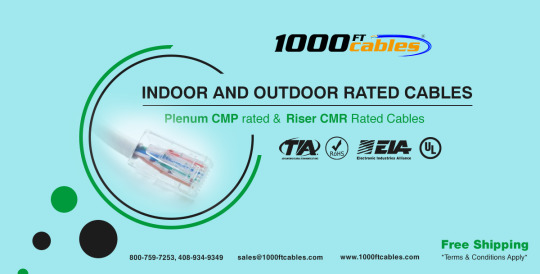
CAT6 Plenum and CAT6a Plenum are both known to be one of the top 3 of the networking cables in the market. Both of these networking cables gives the same speed of 10 gigabytes over the course of 100 meters but CAT6a beats CAT6 in terms of frequency where it gives up to 850 MHz compared to 550 MHz of CAT6. http://bit.do/eUtqm
#cat6#cat6a#cable#cables#plenum#networking#network#plenum cable#networking cable#cat6 cable#cat6a cable#cat6 plenum#cat6a plenum#cat6 plenum cable#cat6a plenum cable
0 notes
Link
Cat6a plenum optimizes data transfer speed as you need and is ideal for voice, data, video and security network installation. This Ethernet Cable is Plenum rated for indoor wiring through plenum spaces with 23AWG and 550MHz solid copper conductors.
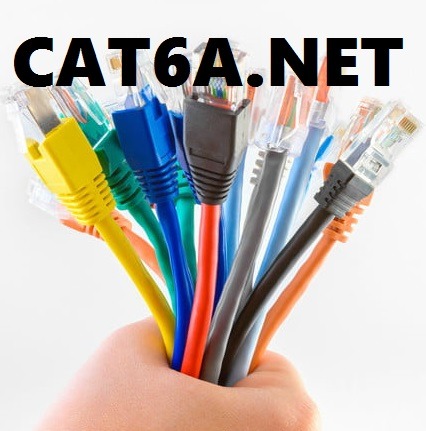
#Cat6a Plenum#Cat6a CMP#ethernet cable#network cable#networking cable#UTP cable#LAN cable#cat6a plenum cable#cat6a plenum rated#cat6a cmp 1000ft#cat6a plenum 1000ft#bulk cat6a cmp
0 notes